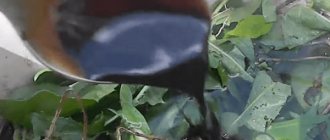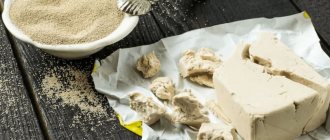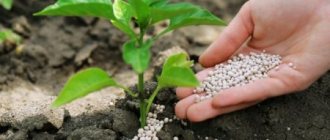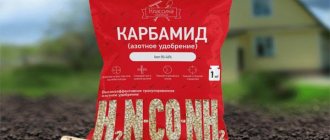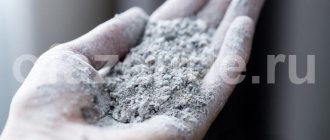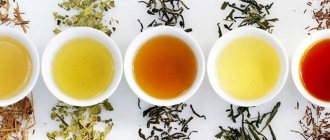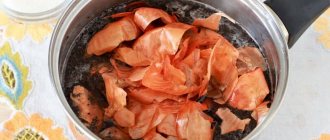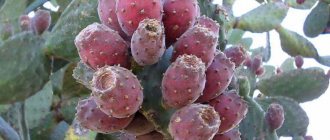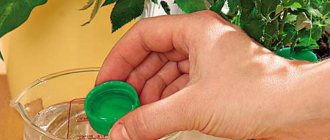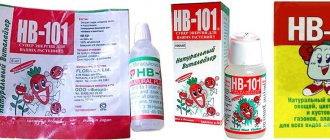Whey is the cloudy yellowish liquid that remains after milk has curdled. It is filled with protein, vitamins, minerals and enzymes. Of course, whey is useful in hundreds of ways, but in this article we will outline its role in gardening.
- How to make whey for the garden
- What serum can be used in the garden
- 1 Serum to change soil acidity
- 2 Whey as fertilizer
- 3 Serum against powdery mildew
- 4 How whey will help grapes
- 5 Serum for weed control
What serum can be used in the garden
First, let us remind you that you need to use unsalted whey in the garden, because salt is harmful to plants.
There are two types of serum that you will encounter:
1. Acid whey - whey obtained from the preparation of cheese or cottage cheese, to which an acid (for example, vinegar or lemon juice) has been added to facilitate the curdling process. Acid whey has less protein and fewer vitamins and minerals, but can still be used in the garden. Acid whey has a pH less than or equal to 5.1. Another difference is that acid whey contains slightly more vitamins and minerals than sweet whey.
2. Sweet whey is the whey produced by making cheese that is curdled with rennet instead of additional acid. Sweet whey has a pH greater than or equal to 5.6.
Many articles mistakenly recommend using only sweet whey and not sour whey in gardening. This is based on the idea that you can go out and spill a pot of undiluted acid whey on your tomatoes without paying attention to the acidity level of the soil, and it will burn the plants.
Both types of whey can be harmful to the environment when large amounts are discharged into waterways because the change in water pH will affect fish and other waterbody life.
And now in more detail about 5 useful areas of application of serum
How to water?
For milk feeding to be useful, it is necessary to choose the right watering time and combination of components. To increase the effectiveness of the whey, iodine, yeast, sugar and honey are added to it .
Iodine enhances the fungicidal properties of the product and inhibits the development of bacterial colonies, while yeast and glucose serve as an additional source of nutrition for plants.
Preparation of the solution
For root feeding, fresh whey is diluted in a ratio of 1:10. The following combinations can be used as fertilizers:
- 100 ml of whey, 1 liter of cool water, 1-2 drops of iodine.
- 200 ml whey, 2-4 tsp. honey, 2 liters of water.
- Dissolve 5 g of dry yeast or 10 g of fresh yeast in 0.5 liters of warm water, add 1 tbsp. sugar, leave for 15-20 minutes, pour in 2 liters of water and 200 ml of whey.
Treatment of foliage against fungi is carried out with a more concentrated solution (1:5 or 1:3). When first used, it is recommended to reduce the concentration by 25-30%. To enhance the effect, add 2 drops of iodine or 1-2 tsp to 1 liter of water. hydrogen peroxide.
Signs of micronutrient deficiency
The need of plants for fertilizing with whey is determined by the following criteria:
- death of young leaves;
- slow growth;
- lack of flowering or small weak buds;
- darkening or pale color of the aboveground part of the plant, the appearance of brown or purple spots, curling of the leaves.
Amino acid fertilizers are actively used after foliage burns or during increased stress (dry weather, replanting, plant damage).
How to irrigate?
It is necessary to water indoor flowers with whey solution no more than 2-3 times a month. The optimal time for feeding is early morning or evening . During the cold season (from October to March), plants need less nutrients and moisture, so fertilization is stopped.
The ratio of nitrogen, phosphorus and potassium (NPK) in the serum is 0.15:0.05:0.17, so it can be used throughout the growing season.
Is it possible to water flowers with beer?
Analyzing various methods of irrigation, another question arises: “can I water flowers with beer?” This procedure is more relevant to fertilizing, since the beer drink contains yeast.
The procedure is quite controversial, due to the fact that modern beer’s composition is not entirely beneficial for the bushes. Beer watering has its pros and cons. Old or homemade beer has its merits, but store-bought beer is best avoided. Because of it, mold, mildew and an unpleasant pungent odor may appear.
Microelement property
Iodine, as an element of the periodic table, is not very common on Earth. But in its pure form, as a chemical element, it is practically never found. Mainly as part of some kind of compound.
Significant iodine content is found in certain seaweeds, from which it is synthesized. It is also found in other plants, but in much smaller proportions.
For most plants, iodine is not a vital microelement, however, its presence has a positive effect on all life processes of plantings.
They grow faster, bloom more often, produce more crops and get sick less often. Thus, feeding home flowers with iodine is optional, but highly desirable for green pets.
But iodine is an element that is necessary for animals and people. According to scientists, the human body lacks it in most cases. This is evidenced by how quickly the yellow antiseptic is absorbed when it comes into contact with the skin.
From a lack of iodine, a person develops thyroid diseases, and other diagnoses appear.
In order to increase the content of this microelement in the body, people drink vitamins and iodine-containing complexes, and also try to eat foods containing this substance. And here feeding homemade fruits and vegetables with iodine solution is very important. Since this element is almost completely absorbed from the food consumed by humans and is absorbed by the body.
Experiences in using iodine solution
Many summer residents and amateur flower growers have already tried these recipes in practice. They constantly observed the experimental cultures and carefully recorded the results in a notebook. After which, the observation data appeared on the Internet.
If you believe the experimenters - lovers of indoor plants, then their house flowers reacted very violently to iodine feeding. They liked this fertilizer so much that they began to grow, develop, bloom faster and practically stopped getting sick.
Anthurium, which had lost all its leaves and, according to the owner, simply disappeared, literally rose from the dead. It was watered once a week with a solution consisting of two liters of water and two drops of fertilizer. After 6 weeks, the flower had new leaves, and after three months it turned into a flowering bush.
Gladioli and Snapdragon got rid of rust, and chrysanthemums began to suffer less from the harmful effects of nematodes.
For all other flowers, the foliage became more luxuriant and brighter, more buds appeared and they bloomed longer.
As for horticultural crops, they have increased their productivity. In addition, the iodine content in the fruits themselves has increased, which has a positive effect on the health of those people who eat them. The harvest began to contain more vitamin C, and therefore its taste improved.
How iodine affects growth, development, improves flowering and fruiting is not yet known exactly. Scientists believe that this element is involved in regulating the functioning of enzyme systems, thereby improving the metabolism of flowers and other green spaces. One way or another, today few doubt the benefits of feeding houseplants with iodine.
However, we must not forget about the possible negative consequences in case of non-compliance with the dosage of the microelement. When preparing fertilizer for your green charges, you should maintain the required proportions. Then indoor flowers will always delight you with green leaves and bright buds, and country plantings will always delight you with a rich and healthy harvest.
What are the benefits of dairy products for plants?
Sour milk as a fertilizer for plants contains:
- proteins fats carbohydrates;
- sugar;
- vitamins - mainly group B;
- minerals – about 10 items;
- amino acids.
The whey contains lactic acid bacteria, which can help in the production of compost and other fertilizers, recipes for which will be given below. Microorganisms help fight fungal flora. If you add detergents to it, you can avoid the appearance of pests.
You should adhere to the rules and use only a 10% solution, since more concentrated formulations increase the acidity of the soil, which leads to inhibition of crops and a slowdown in their growth.
We draw up an appointment schedule
In order for fertilizing to have the greatest positive effect on different types of plants, it is necessary to take care not only of the correct preparation, but also of the frequency of its use. As mentioned earlier, it is better to alternate foliar and root methods of nutrition, however, this must be done wisely:
- During the first period of development, it is better to alternate methods of enriching plants.
- When tomatoes and other crops are strong enough, you can switch to root feeding only.
In addition, we must remember that the serum must be applied directly to the soil within a certain period of time. Most gardeners agree that plants need such fertilizing for the first time 10 days after planting. At least two weeks should pass before the second “meal”, and the third time should be fed during the beginning of flowering.
Read also: Peat toilet for a summer residence - pros and cons, principle of operation
Two ways of fattening
The presented fermented milk product is especially loved by cucumbers, zucchini, squash and even roses and other flowers. Therefore, fertilizers can also be used in the flower garden. However, tomatoes appreciate it most of all - nothing else transforms them so much.
Applying fertilizer to vegetable crops
But in order for plants to get the maximum “positive emotions” from such a “delicacy,” you need to know in what form “the dish can be served.” There are two main methods for adding fermented milk products:
- Root method - nutrients are applied directly to the soil;
- Foliar method - the solution is applied to the leaves and stems of growing vegetables and fruits.
How to improve productivity?
We are constantly receiving letters in which amateur gardeners are worried that due to the cold summer this year there will be a poor harvest of potatoes, tomatoes, cucumbers, and other vegetables. Last year we published TIPS on this matter. But unfortunately, many did not listen, but some still applied. Here is a report from our reader, we would like to recommend biostimulants for plant growth that will help increase the yield by up to 50-70%.
We advise you to prepare in advance for the summer season, pay attention to this biological product. There are a lot of positive responses.
Both methods have their advantages and limitations for use. So, the concentration of the substance for the root method should be at a lower level so that it does not burn the root system. For spraying, stronger solutions are used, making the effect more effective.
When spraying, it is possible to save fertilizers, since they are not washed out of the soil by water. It is better to alternate both methods with each other. Can be used both in greenhouses and in beds.
Insect repellent
Using the serum, you can prepare a composition to combat the main plant pests - codling moths and leaf rollers. To combat them, you can make a fairly effective trap:
- Cut off the top half of the plastic bottle and make holes for the rope harness.
- Fill the resulting vessel one third full and hang it on a tree overnight.
In the morning you will see a large number of insects in the container, including our main opponents.
How to make the best organic vegetable food?
Now you know that even with the help of improvised means you can create an effective means of helping garden and cultivated plants. Follow the rules for its use and get a rich harvest in the fall.
Interaction with other fertilizers
Whey goes well with mineral combination formulations. It can also be used simultaneously with organic means - compost, humus, ash. Complexes of microelements and green infusion of green manure are considered excellent additions to the product.
When using mineral components, bacterial microorganisms allow them to be transformed into a form more convenient for absorption. As a result, it is possible to obtain chelated types of fertilizers.
If you add whey to the infusion of green manure, you can significantly speed up the fermentation process. As a result, nutrients enter the soil in a semi-decomposed form. The use of whey causes active proliferation of bacterial microorganisms. This helps speed up the decomposition of plant residues. As a result, the volume of humic acids increases. They help make the soil more fertile.
Root and foliar feeding
You can use whey for plants as a fertilizer using root or foliar methods. To do this, prepare a regular 10% solution and pour it around the stem. Next, you need to water the area with clean water so that the lactic acid bacteria enter the soil - into the root system area.
When using baker's yeast, it is necessary to increase the rate of potassium supplements, since yeast bacteria intensively absorb potassium from the soil. Potassium deficiency can be determined by the onset of marginal leaf burn and subsequent yellowing.
Foliar feeding is necessary for the most part only for the prevention of fungus.
